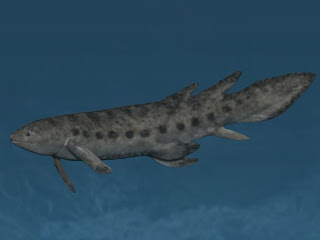Description
About Dipterus valenciennesi Ancient Lungfish
Physical Description
Dipterus valenciennesi is an early lungfish (Dipnoi), and therefore possessed the ability to respire oxygen from both water and air. The snout of Dipterus is broad and the jaws contained crushing plates, which may have been used to feed on arthropods or vegetative matter. The pectoral fins are located just behind the gill cover, while all other fins are situated at the back quarter of the body. Their paired fins are leaf-shaped with long lobes.
Age and Distribution
Dipterus is from the Middle Devonian of Scotland, living approximately 385 million years ago. At the time this area of Scotland was part of the Orcadian Basin, which was a huge complex of lakes that stretched for hundreds of miles. During this period plants started to rapidly colonize the land and fishes dominated nearly every niche of seas and lakes, hence why this period is also known as the “Age of Fishes”. Dipterus co-inhabited the lake with other fishes like the acanthodians Mesacanthus and Diplacanthus, the osteolepids Gyroptychius and Thursius, the porolepid Glyptolepis, the enigmatic Paleospondylus and the placoderms Dickosteus, Coccosteus, Pterichtyodes, Rhamphodopsis and Homostius.
About the Dipnoi Dipterus valenciennesi Ancient Lungfish
Evolutionary Significance
The earliest known Dipnoi date back from about 400 million years ago. During the Devonian the Dipnoi had dorsal, anal, and caudal fins. At the end of the Devonian these fins disappeared or merged to form one a single elongated caudal fin. This is a characteristic which all living lungfishes still have. It is believed that since the end of the Carboniferous lungfishes only inhabited freshwater. Later during the Permian they evolved the ability to aestivate, which means they can lie in a state of dormancy enclosed in the mud to survive long periods when a river or lake dries up, becoming active again when the rains arrive.
Taxonomy
Dipterus valenciennesi belongs to the Dipnoi which is a subclass of the Sarcopterygii (lobe-finned fishes). Dipnoi comes from Ancient Greek meaning “two lungs”, referring to their abilty to breathe underwater with gills and gulp air using their swim bladder. Other Dipnoi from the Middle Devonian Scotland are Pentlandia macroptera and Pinnalongus saxoni.






